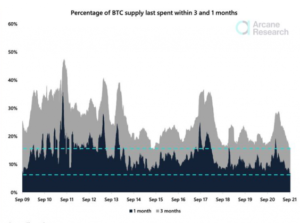Options trading can provide a meaningful addition to one’s portfolio when used in a disciplined manner. When used as a component of an overall portfolio approach, generating consistent monthly income while defining risk, leveraging a minimal amount of capital, and maximizing return on capital can be achieved. Options can enable smooth and consistent portfolio appreciation without guessing which way the market will move. An options-based portfolio can provide durability and resiliency to drive portfolio results with substantially less risk via a holistic beta-controlled manner. When engaging in options trading, specific rules must be followed, and one of the most important rules is to structure every option trade in a risk-defined (put spreads, call spreads, iron condors, etc.) manner.
PayPal (PYPL) was a recent example where the stock witnessed a massive meltdown from an ill-advised acquisition target (Pinterest) coupled with quarterly earnings that were deemed dismal. These two events culminated into a 35% slide from a 52-week high of $310 down to ~$200 post-earnings. Hence the importance of risk-defining all options trades to limit any downward stock movement beyond your protection strike. Risk-defined options trading prevents any losses beyond a specific strike price, avoids the assignment of shares, does not require a significant amount of capital, and does not potentially result in unrealized losses while soaking up capital with any share assignments.
Risk-Defined Options Trading
Risk-defined option trades are straightforward. Below is a theoretical example deploying a put spread on a stock that currently trades at $100 per share.
-
1. Sell a put at a $95 strike and collect $1 per share in premium – You take on the obligation to buy shares for $95 by the expiration date and receive $100 in option premium income.
2. Buy a put at a strike of $90 by using some of the premium received (e.g., $0.40 per share) – You have the right to sell shares at $90 a share by the expiration date.
In the above put spread scenario, premium income was $60 per contract ($1.00 – $0.40) and the maximum risk was $440 ($95 – $90 = $500 – $60 of net premium income). If the shares remain above $95 by the expiration date, then the option expires worthless, and the seller of the put spread locks in a realized gain of $60 or a return on investment of 13.6% ($60/$440). This is the essence of risk-defined options trading, where a minimal amount of capital is leveraged and return on investment is maximized.
No matter where the stock moves, losses are capped at $440 per contract even if the underlying stock falls to zero. This is the case due to the protection put leg that was purchased at the $90 strike. Therefore, in the worst-case scenario, if the stock were to fall to zero, you would be assigned shares at $95 and then sell the shares for $90 for a max loss of $5 per share less the $0.60 in premium, thus max loss of $440 per contract.
PayPal Case Study
PayPal (PYPL) experienced a dramatic fall from $296 on September 8th to ~$200 on November 10th after a two-step debacle of a mishandled acquisition target and a big earnings miss. This 32% downslide happened over the course of 8 weeks. A put spread of $245/$240 was sold on PayPal, and a near max loss was suffered. However, the $40 additional dollars per share in unrealized losses were avoided with the $240 protection strike. In a cash-covered put situation, shares would’ve been assigned at $245, and a subsequent ~20% loss would’ve been incurred. Cash-covered puts can not only be dangerous in situations like this but can also tie up substantial amounts of capital with unrealized losses. Therefore, a risk-defined put spread was essential in order to protect downside risk and avoid any capital-intensive assignment of shares.

Figure 1 – The importance of risk-defined options trades such as put spreads, call spreads, and iron condors which is the foundation of options trading – Layanan Pemberitahuan Perdagangan dan Alat Penyaringan Opsi
10 Aturan untuk Strategi Opsi Agile
Pendekatan disiplin terhadap portofolio berbasis pilihan yang tangkas sangat penting untuk menavigasi kantong volatilitas dan menghindari penurunan pasar. Sejumlah tindakan perlindungan harus diterapkan jika opsi digunakan untuk mendorong hasil portofolio. Saat menjual opsi dan mengelola portofolio berbasis opsi, pedoman berikut ini penting (Gambar 3):
-
1. Berdagang di beragam ticker yang tidak berkorelasi
2. Memaksimalkan keberagaman sektor
3. Menyebarkan kontrak opsi pada berbagai tanggal kedaluwarsa
4. Jual opsi di lingkungan dengan volatilitas tersirat tinggi
5. Kelola perdagangan yang menang
6. Gunakan perdagangan dengan risiko tertentu
7. Mempertahankan tingkat kas ~50%.
8. Maksimalkan jumlah perdagangan, sehingga probabilitas sesuai dengan hasil yang diharapkan
9. Tempatkan kemungkinan sukses menguntungkan Anda (delta)
10. Ukuran posisi/alokasi perdagangan yang tepat
Kesimpulan
An options-based portfolio can provide durability and resiliency to drive portfolio results with substantially less risk via a holistic beta-controlled manner. When engaging in options trading, specific rules must be followed, and one of the most important rules is to structure every option trade in a risk-defined (put spreads, call spreads, iron condors, etc.) manner. Therefore, a beta-controlled, options-based strategy is key, and the market meltdown in September reinforces why appropriate risk management is essential. An options-based approach provides a margin of safety while circumventing drastic market moves while containing portfolio volatility.
PayPal (PYPL) was a recent example where the stock witnessed a massive meltdown from an ill-advised acquisition target coupled with poor quarterly earnings. These two events culminated into a 35% slide from a 52-week high of $310 down to ~$200 post-earnings. Hence the importance of risk-defining all options trades to limit any downward stock movement beyond your protection strike. Risk-defined options trading prevents any losses beyond a specific strike price, avoids the assignment of shares, does not require a significant amount of capital, and does not potentially result in unrealized losses while tying up large sums of capital with share assignments.
Nuh Kiedrowski
Kontributor INO.com
Pengungkapan: Stock Options Dad LLC adalah perusahaan Penasihat Investasi Terdaftar (RIA) yang berspesialisasi dalam layanan dan pendidikan berbasis opsi. Tidak ada hubungan bisnis dengan perusahaan mana pun yang disebutkan dalam artikel ini. Artikel ini mencerminkan pendapat RIA. Artikel ini tidak dimaksudkan sebagai rekomendasi untuk membeli atau menjual saham atau ETF apa pun yang disebutkan. Penulis mendorong semua investor untuk melakukan penelitian dan uji tuntas sebelum berinvestasi atau mengambil tindakan apa pun dalam perdagangan opsi. Silakan berkomentar dan memberikan masukan; penulis menghargai semua tanggapan. Penulis adalah pendiri dan Anggota Pengelola Stock Options Dad LLC – Sebuah perusahaan Penasihat Investasi Terdaftar (RIA). www.stockoptionsdad.com mendefinisikan risiko, memanfaatkan jumlah modal minimal dan memaksimalkan laba atas investasi. Untuk konten berbasis opsi berdurasi pendek yang lebih menarik, kunjungi Stock Options Dad LLC's Youtube saluran. Silakan mengarahkan semua pertanyaan ke [email dilindungi]. Penulis memegang saham AAPL, AMZN, DIA, GOOGL, JPM, MSFT, QQQ, SPY, dan USO.
Source: https://www.ino.com/blog/2021/11/paypal-importance-of-risk-defined-option-trading/
- "
- perolehan
- Tambahan
- Semua
- alokasi
- artikel
- bisnis
- membeli
- panggilan
- modal
- Uang tunai
- Perusahaan
- komponen
- Konten
- kontrak
- kontrak
- Delta
- ketekunan
- dolar
- Pendapatan
- Pendidikan
- dll
- ETF
- peristiwa
- Angka
- Perusahaan
- Prinsip Dasar
- pendiri
- Gratis
- pedoman
- High
- HTTPS
- Pendapatan
- investasi
- investasi
- Investor
- kunci
- besar
- LLC
- Kunci
- pengelolaan
- Pasar
- Meltdown
- pindah
- bergerak
- Dekat
- bersih
- pemberitahuan
- Pendapat
- pilihan
- Opsi
- urutan
- PayPal
- Bermain
- miskin
- portofolio
- Premium
- harga pompa cor beton mini
- melindungi
- perlindungan
- Protektif
- Hubungan
- penelitian
- Hasil
- Risiko
- manajemen risiko
- aturan
- Safety/keselamatan
- menjual
- Layanan
- Share
- saham
- So
- terjual
- penyebaran
- saham
- Penyelarasan
- sukses
- target
- TIE
- perdagangan
- perdagangan
- Trading
- Votalitas
- Youtube
- nol



